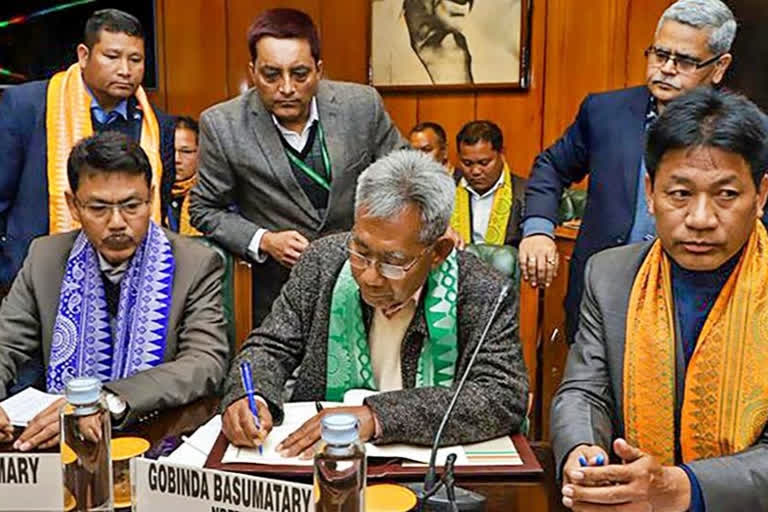New Delhi:While there was a lot of focus on the Naga accord or even the pact with the ULFA, the Centre has sprung a surprise by inking an accord with the Bodos on Monday (January 27, 2020) where the Union government, Assam government and an inclusive pool of Bodo leaders were signatories.
It is yet another step that will strengthen the unitary bias the Indian political system has against the extant federal structure.
While it may well be argued that power has been transferred to the grassroots, it has been done so at the cost of the state and to the gain of the Centre. In other words, it is the Centre that has gained a much stronger linkage by bypassing the state and creating a much direct linkage with the grassroots.
A tripartite mechanism comprising a Cabinet-ranked state minister, the chief executive of Bodoland Autonomous Council (BAC) and a Union home ministry representative will oversee all activities in the Bodoland Territorial Region. This body will meet at least twice a year and for all practical purposes, be the arbitrator of fate for the Bodo region.
If the provisions are to be looked at closely, Bodos, justifiably and deservedly so, will gain more executive, legislative, administrative and financial powers than ever before. On the other hand, the state, besides being subjected to an ‘economic shock’ because of loss of revenue-earning sources, will have to yield much more space than ever before to the Centre.
It has to be remembered that the latest accord is the third in a series, each one progressively a step forward towards delegation of greater autonomy. The first accord with the All Bodo Students Union (ABSU) in 1993 led to the creation of the Bodoland Autonomous Council (BAC). The second in 2003, inked with the Bodo Liberation Tigers (BLT) led to BTC (Bodoland Territorial Region) with much larger powers than the BAC.
Monday’s accord will see a greater region formed by adding contiguous Bodo-dominated areas that will be called the Bodoland Territorial Region (BTR). The new entity will have much more executive, legislative, administrative and financial powers at its behest than ever before including the crucial say in transfers and postings of government officials in the BTR.
The next logical step—demand for statehood may not now be forthcoming. A top Bodo leader Gobinda Basumatary, and one of the signatories to the latest accord, said: “We are satisfied with what has been offered. The new model is almost equivalent to being offered a separate state…We do not think the creation of a new state in necessary now.”
